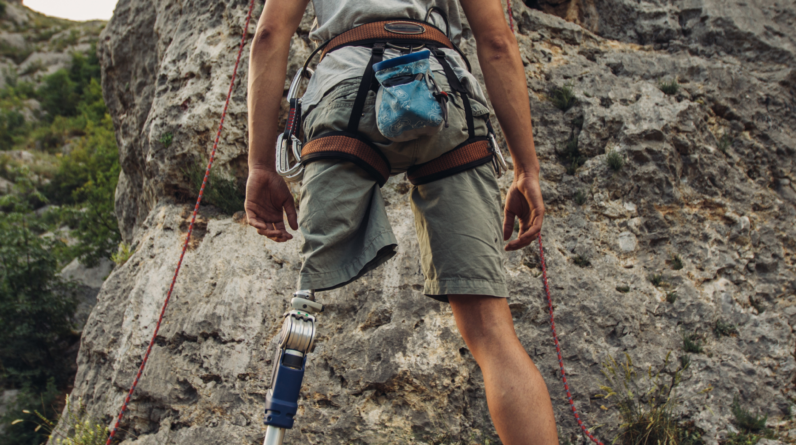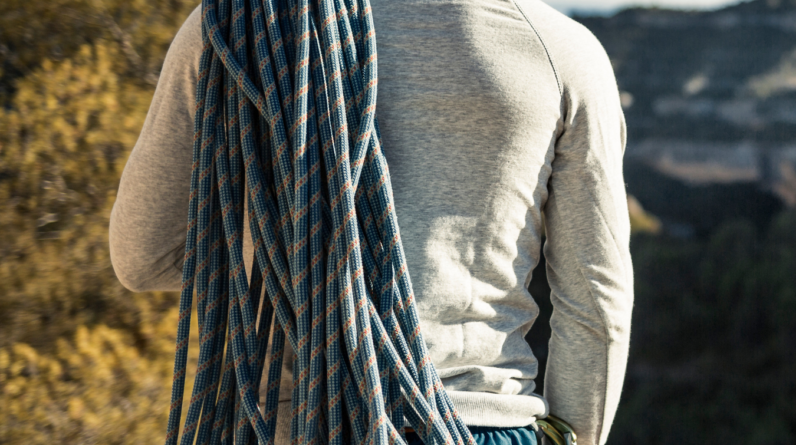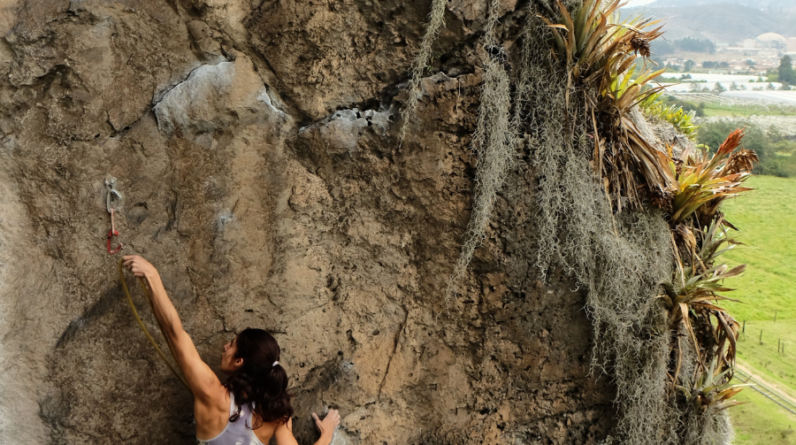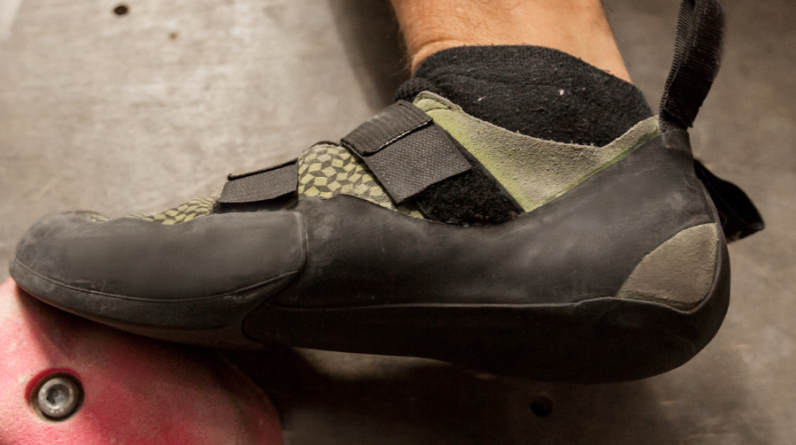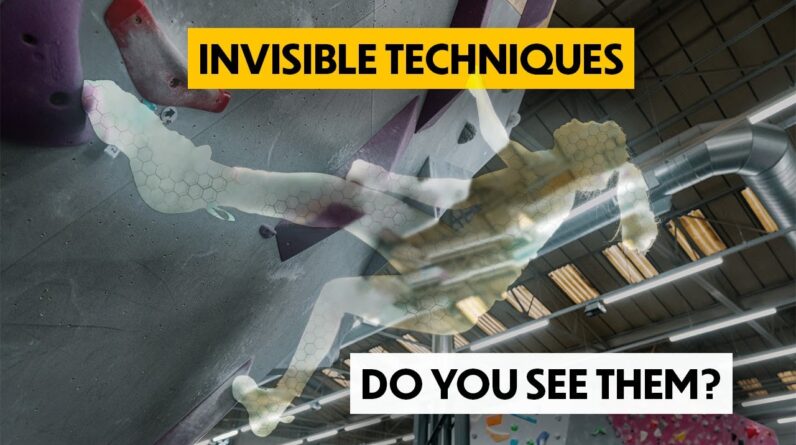
What do drop knees, dynos, heel hooks, foot swaps and twisting techniques all have in common? You can see when a climber performs them. However knowing how to do the technique is only part of the equation to good movement. What you can’t see is often what makes the biggest difference! For example, optimal pressure through the feet, relaxing all unnecessary muscles, being able to try hard enough. In this video we go through the invisible techniques, the ones less obvious, but perhaps the most important to reaching your full potential.
Some climbing techniques are really Obvious but what we’re talking about in This video is the invisible techniques This is what’s going on under the Surface which you can’t see climbers Doing but only the most elite athletes Are doing these [Music] We’re here filming at the Sheffield Hangar today and there is a little bit Of root setting going on in the gym so If you hear some Joe notices in the Background apologies for the noise Gripping holds slowly is particularly Important when the handholds are really Bad you might hear climbers saying Things like oh you need to get your left Index finger on that tiny Crystal over There otherwise the hold feels terrible A great example of this is watching Someone like Aiden Roberts who is a bit Of a specialist when it comes to small Hard holds if you watch him climbing Often he’ll move really slowly and Statically and grip the hole in a very Specific way it’s these intricacies that Can make a climb feel impossible or make It feel relatively easy because you get The hold just right being very body Strong particularly helps with this Because you often have to take out the Momentum of the movement so that you can Grip the hold really slowly so if you Struggle with static movement it’s often
Helpful to practice this on the wall but Also make sure you’re spending time in The gym working in your strength and Conditioning we don’t tend to get forced Into this style of movement nearly as Much as indoor climbing where the holes Are often bigger and much more ergonomic Mix so we don’t have to come into them Really slightly to get them that Precisely this might be another reason Why some people find it quite hard to Transition from indoor climbing to Outdoor climbing particularly if they’ve Never done it before this doesn’t Account for all indoor and outdoor Climbs but if you wanted to practice This indoors we can take climbs that Might be dynamic and try and do them Again in a more static manner [Music] Relaxing more seems strange to say when Climbing is obviously a physical sport And we obviously have to be strong and Try hard when we’re climbing however This is something that really good Climbers do very well and makes a Massive difference to their efficiency And also recovery on climbs I think this Is often more obvious for root climbers Because they spend so long working on Efficiencies however this skill is also Still very important for boulderers what We mean by relaxing more is not relaxing Everything but just relaxing the muscles
Which you don’t need to have engaged for A certain movement and this is to Improve efficiency and the economy of Movement when you’re getting up a climb When relaxing essentially what we’re Trying to do is disengage the muscles Relax and almost hang under passive Structures and on the skeleton of our Body however you might have also heard That hanging on your skeleton is Something you should be avoided because It increases the risk of injury I would Push back against this a little bit and Say that actually in performance being Able to hang passively on your shoulders And on your fingers is actually really Important specific typically if you’re Trying to perform where you’re going to Be aiming to conserve as much energy as Possible and that this is a totally Normal thing to do in your climbing some Examples of this is resting on a Outstretched arm letting the elbow come To a straight line letting the shoulder Drop away and keeping it all nice and Relaxed while you’re just holding on With your grip we can do a similar thing With our lower body for example a high Heel hook where we’re just engaging the Calf to keep a good point making sure That the heel has a good profile for the Hold but then relaxing the hamstring Relaxing the hips and letting your hips Sink away from the foothold even in your
Grip often using the three finger drag Is a really good grip position for Resting or just using less energy as we Start to hang on a more passive tension Grip rather than the more active grips Like half trim what I’m not saying is That we don’t need to train strength Maximum recruitment or tension in our Climbing rather that we should be Looking to use our strength and that Recruitment and tension as little as Possible so that we can conserve the Energy for really trying out our and Really getting the most out of our limit Climbing you might have heard some Climbers say that their superpower in Climbing is their ability to try hard And access that final few percent this Would certainly be true for any Elite Athletes which compete because they need To really be getting the most out of Every bit of strength they have to Perform at their best being able to try Hard is definitely a skill and it’s Something we can train and get better at Over time however I’m going to suggest That there’s two different types of Tryhard in climbing one that relates More to strength and power and one that Relates more to endurance and I think Both of these things can be trained Slightly differently the one that Relates to strength and power is going To be best trained through bouldering
Where we have to try really hard you’ll Probably find that Boulders are better At this skill because they perform it All the time but just because your Boulder doesn’t mean that you’re going To be really good at trying hard so I Know that in the past definitely I’ve Shied away from any sort of like Scrappy Real try hard attempts where I had to Really dig in deep to get up the climb And I’ve tended to just drop off because I didn’t feel like it flowed well enough A nice tactic to move away from this is Forcing yourself to go and Flash Boulders that are hard for you because Ultimately not all of them are going to Go to plan first time and you’re going To have to try really hard to pull out The bag regardless of how the movement Goes the try hard that root climbers Will often experience I believe is quite Different often when you get really Pumped we tend to get tunnel vision and Our movement tends to fall to bits Training your ability to try really hard While root climbing is kind of made up Of two different parts first your Ability to really push and get the last Bit of energy out of your forearms and Out of your body but also the second Part is adding the skill element to that Because it can fall apart and get quite Scrappy when you’re tired the former Part of this is trained quite well on
Things like footless campusing when You’re just going up and down up and Down up and down and getting really Pumped in the forearms or doing Something like this on really well-known Routes where you know the moves and you Don’t have to be so conscious in Executing the movement the other side of This is practicing endurance in a really Skill heavy environment so getting Really be pumped on on-sighting is a Great example of this a really great Place to see this skill being executed Is in the World Cup lead climbing where You’ll see athletes trying really hard And executing perfect technique right up Until the very last move applying Tension is obviously very important to Climbing and it can be quite obvious to See climbers when they apply tension Well on a climb but what is more subtle And a little bit more invisible is when Climbers are able to apply tension well Throughout the move from start to finish Even what we might call a fairly static Move obviously involves movement and There will be displacement of weight so How you apply tension throughout that Move will often dictate where your hips Or upper body end up from the start or End of that movement so your foot might Pop off of the foothold not because you Lost tension at the end of the move but Because you didn’t maintain tension
Throughout the movement and your hips Shifted too far out of the wall being Able to coordinate enough tension Through your body throughout a movement Is a difficult skill and ultimately it’s Going to come down to Lots of deliberate Practice while climbing just trust it is A really common phrase in climbing Particularly if you’re ever slab Climbing you’ll hear people say this to One another when they’re using really Bad footholds and they really need to Commit to standing up on it something Really great climbers have is the Confidence and Trust to use bad Footholds and to be able to put more Weight through their legs and lower body The saying goes a weighted foot never Slips and obviously if you don’t trust The foothold you’re not going to weight It properly and it probably actually Increases the chances of that foot Slipping however trust probably Shouldn’t just be assumed trust needs to Be earned and a good example of this is Also in Trad climbing when we are Placing protection as we climb most People if you’ve not fallen on track yet Before will think it’s a terrifying Concept but of course good Trad climbers Fall on tradge all the time because they Trust their gear if you trust your gear You’re going to climb with more Confidence and probably climb a lot more
Efficiently the only way these Trad Climbers build up that trust was slowly Over time testing out what they could Get away with and what was good and when They fell on the gear and it held they Trusted those placements more the same Needs to be done with your climbing we Need to be practicing things like slab Climbing trusting bad feet and really Just taking patience and building up Experience over time it’s quite simple This one finger strength is probably the Biggest attribute to your climbing but You can still have holes in your So-called strength if you don’t train or Grip types as an example if we are to See a strong climber falling off Something we think they should be doing With relative ease and technique looks Good one thing that is likely going Wrong is they’re climbing on a style of Handholds that represents a weakness to Them this might be the three finger drag It might be Pockets there’s a pretty Common one for indoor climbers it might Be the full crimp it might be the half Crimp position and in my own example It’s definitely pinches and this is Something that has represented a Weakness for me for quite a long time And so it’s important for me to add this Grip into my training if I want to be a Well-rounded climber what we mean by leg Dominant climbing is making the use of
Heel hooks tow hooks and things like Drop knees as well where you can bring Your hips close to the wall while all of These techniques might be fairly visible What is more subtle and makes the Biggest difference is the climbers Actually using these techniques really Well and being able to apply more Tension through their feet than someone Else and being able to shift more weight Onto their lower body and taking that Weight off of their upper body and Fingers even if you have relatively Skinny legs like me they are still big Powerful muscles and they should be used As much as possible in climbing so that You can conserve energy in your upper Body of course before you start Practicing your invisible climbing Technique you need to make sure that Your visible techniques are looking good And to do that you need to watch our Essential footworks video over here and Always thanks for watching we’ll see you Next time Foreign [Music]

